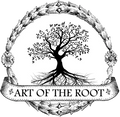Italy is a country with a rich history and culture, and one of the most interesting aspects of it’s cultural heritage is the tradition of Italian witchcraft, also known as Stregoneria. Stregoneria is a centuries-old practice with roots in the folklore, mythology and native religious rituals and beliefs of the Italian people.
Historical Context
Stregoneria has pre-Christian roots and was closely tied to the worship of nature and energy of the land. The practitioners of Stregoneria believed in the power of nature to bring good luck, health, ward of evil and illness, which they achieved through the spells, incantations, and herbal remedies passed down through tradition. However, during the 16th and 17th century witch hunts, the rise of the Catholic Church led to the suppression and demonization of Stregoneria, resulting in the persecution of executions of thousands of mostly women. Despite this suppression, Stregoneria survived and continued to be practiced in secret, evolving and adapting over time. In the 20th century, Stregoneria experienced a resurgence in Italy and throughout the world. Its practices are still found today, with many practitioners utilizing these methods in their rituals and spiritual practices..
Spiritual Beliefs and Practices
The spiritual beliefs and practices of Stregoneria focus in the use of natural materials and the manipulation of energy for practical and spiritual purposes. With the use of herbs, spells, and invocations, practioners performed rituals that enabled them to tap into the power of nature and the spirit world. Practitioners of Stregoneria believe in the power of sacred herbs and their symbolic and practical value. In Stregoneria, people often used herbs like rosemary, basil, thyme, and fennel for their unique magical properties, such as love, purification and protection. Herbs were also used as a meams to empower of enhance spells and incantations.
In addition to herbalism, the evil eye is a widely-held belief in Italy, centered around the idea that an individual can harm another person through their gaze. It is associated with the concept of "limited good," in which good in the world is believed to exist in limited quantity. This belief system extended to the human body, with youth being seen as "wet" and old age as "dry." The evil eye can be given accidentally, and there are thousands of spells in Italian folklore to turn back the evil eye, many of which involve water. Amulets have been used for centuries to ward off evil and bring good luck.
Healer or Witch
In Sabina Magliocco’s article, "Witchcraft, healing and vernacular magic in Italy," Magliocca helps define the roles of both folk healer and witch. According to Magliocco, folk healers could be divided into two categories: those who had a limited knowledge of specific charms and those who possessed a broader understanding of various magical techniques and practices. Each village had a number of these practitioners, ranging from those who used herbs, magic formulas, and prayers to professional sorcerers who were called in for more serious cases of magical attack. Despite the varying levels of expertise, the practitioners were all referred to as curatori/curatrici (curers), guaritori/guaritrici (healers), or simply as praticos (knowledgeable ones). The term strega (witch) was never used, except as an insult.
On the other hand, Magliocco notes that not all forms of magic were intended for healing purposes. She writes, “The ethnographic record is rich with instances of manipulative or aggressive magic, usually in response to claims of sorcery done against the client. Attaccature, fascini, legature and fatture are examples of this type of magical working, and share an emphasis on the domination of the victim’s body through attachment, binding or fixing. The structural features of these spells were often similar, whether they were used for love or to cause illness or death. Love spells often involved the manufacture of philtres or potions using menstrual blood or semen to bind the object of affection through the principle of contagious magic.”
Sources:
Magliocco, Sabina. "Witchcraft, healing and vernacular magic in Italy." In Witchcraft Continued, edited by Willem de Blécourt and Owen Davies. 35-50. Manchester University Press, 2020. doi: https://doi.org/10.7765/9781526137975.00012
"Witchcraft in Italy." Oxford Research Encyclopedia of Religion. Published online.
"Italian Witchcraft: The Old Religion of Southern Europe." Sacred Texts.
"The Witch-Hunt in Early Modern Italy." Renaissance Studies. Vol. 23, No. 3, September 2009.






Leave a comment